EASTPORT — Dale Maddocks loves to tend his large vegetable garden. But these days garlic is the only thing he can grow in Eastport because of the deer.
“They jump the electrical fence,” he said. “They’re like Olympians. I’ve thrown fireworks at them and chased them. They keep coming back.”
Another resident, Bob Bean, was taken aback recently when a curious doe stuck its head in his car window to get a better look at Bean’s cockerpoodle.
Eastport, an island community of 1,300 residents in Down East Maine, has become inundated with whitetail deer – roaming the streets, grazing in backyards.
The problem has become so acute that Eastport has asked the state for a special hunt to try to cull the herd – a solution some residents are skeptical about. There has been no hunting for does here since 2005, when the state redrew hunting district lines and eliminated any-deer permits in Eastport.
“Our island is just 3 square miles and we laugh and say there are more deer in town than people,” said City Manager Elaine Abbott. “There is nothing normal and wild about the deer here.”
Residents surround their gardens with wire, rope or soap to keep the deer away.
“They’re not afraid of people,” said Caitlyn Stellrecht. “They’re not afraid of cars. They are almost pets.”
It’s become more than a nuisance. In 2015, Eastport police reported 20 vehicle accidents involving deer that – all told – cost roughly $40,000 in damage.
“It’s amazing the number of close calls for deer strikes,” said Dean Pike, owner of Moose Island Marina. “To me that is the big issue, these near misses with vehicles. They just jump out and who knows what could happen? It’s getting bad.”
ROLE OF 2005 DECISION BY STATE
Eastport is a two-hour drive from Bangor, past blueberry fields and forests. The island has a busy working waterfront, with brick buildings that house restaurants, pubs and art shops that draw tourists each summer. The famous lobsterman statue in the center of town towers over the main drag, appropriately called Water Street, with its views to Cobscook Bay.
Listening to deer stories from many in Eastport makes the whitetails’ behavior sound exaggerated. But if you drive around this island, from the forested state park at the west end to the densely settled neighborhoods of small capes and large Victorian homes, you will find signs of deer everywhere. Flattened hostas and the munched-on wildflowers are evident in a small community garden within a shout of the working docks.
Eventually – as happens to everyone here – you will come upon a small herd. Get out of the car, cross the street, and you can walk right toward it.
Even when you approach within 20 to 30 feet, the deer may not bother to look up. Only once you get as close as 3 to 5 feet will they start to move. Even then, there is no quick turn and leap away, like a typical wild Maine whitetail. The deer here just walk calmly away.
Tom Schaeffer, a regional wildlife biologist for the state, estimates that there are no fewer than 20 deer per square mile on the island – and there could be as many as 50-60 per square mile.
The explosion in the herd can be traced back to 2005, when state hunting district lines were redrawn, eliminating any-deer permits in Eastport. Since then, the city has had a bucks-only hunt during the state’s deer hunting season in the fall.
“In most cases a bucks-only hunt sets you up for a maximum population increase when you have no removal of does,” Schaeffer said. “I think that is the crux of much of their problem.”
The island’s habitat and moderate coastal climate are conducive to a thriving herd. Undeveloped fields and woods on the west side border the residential community, where high shrubs and tree-lined sidewalks create a haven for whitetails.
“They live right on the edge, then they wander through the residential areas,” Schaeffer said. “They have easy access to food and cover and shelter. And that whole dynamic presents a problem when it comes to controlling deer by recreational hunting. It’s tough to conduct a recreational hunt in that kind of residential area.”
So far, Lyme disease has not been an issue in Eastport, compared to southern Maine. Washington County had fewer than 15 reported cases of the tick-borne disease each year from 2012 to 2014, according to federal data. York County, by comparison, had more than 200 cases each of those years.
SPECIAL DOE-ONLY ARCHERY HUNT PROPOSED
Special hunts are allowed by the state to help island communities cope with burgeoning deer populations, such as the one conducted in Islesboro earlier this decade.
Last fall, three-quarters of Eastport voters supported seeking permission for a special hunt from the Maine Department of Inland Fisheries and Wildlife.
In August, the city’s newly formed deer committee proposed a special “antlerless” – or doe-only – archery hunt using 22 residents (or acquaintances of residents) and eight nonresidents. The hunt would take place for two weeks each year over three consecutive Decembers. Each hunter would be able to take one deer.
Eastport presented its plan to DIF&W’s Advisory Council earlier this month. The plan is open for public comment until Nov. 18, and the Advisory Council will vote on the proposal in late November or December.
Because Eastport has a firearm ordinance, a bow hunt is the only option. In addition, some of the island’s open fields and larger house lots are posted.
Chris Bartlett, who chairs the city’s deer committee, said the bucks-only archery hunt that takes place in the fall now has led to a mistrust of bow hunters who come from outside Eastport. The hope is the special hunt using mostly residents will change that.
“There have been a few hunters who have been discourteous in the way they hunt in Eastport, shooting at and killing and wounding deer in the congested residential areas,” said Bartlett, a hunter. “It’s not any place the average hunter would hunt. These are postage-sized lawns.
“That behavior is not widespread. But it only takes a few instances to turn a lot of folks off to hunting.”
EASTPORT ‘IS STAYING OPTIMISTIC’
The mistrust of hunters is not hard to find here.
At Dastardly Dick’s coffee shop, a few older patrons nodded in agreement as Peter Frewen, who runs the cafe, raised concern over the special hunt. Frewen isn’t convinced it will work, although he agrees the herd needs to be thinned.
“The whole thing seems nuts,” he said. “But if there is a hunt I want some assurance that it will be safe, be humane, and be effective. I’d like to see professional hunters.”
Bartlett said Eastport considered a paid sharpshooter, which many island communities have used, but at an estimated cost of $600 per deer it was not affordable.
If the DIF&W Advisory Council doesn’t approve Eastport’s proposal until December, it will have just days to organize the hunt.
“(The town) is staying optimistic,” Bartlett said. “We will pull it off if we’re given the green light.
“We have to hit the ground running. Our primary goal is to reduce deer numbers. Our secondary goal is to increase public understanding of how to manage deer hunting in Eastport.”
In the meantime, just about every day deer stories are shared in Eastport.
Abbott said her 3-year-old great-niece enjoys sitting in her yard under the Japanese knotweed bushes where does bed down, edging within 10 feet of the whitetail. She said everyone in town loves the deer; most just want far fewer of them.
Genevieve Wade grew up on nearby Dog Island eight decades ago and has lived in Eastport since. As she strolled around downtown on a sunny October day, she couldn’t recall ever before seeing so many deer.
“They are everywhere. They just wander through backyards in town and walk very slowly. Everyone watches them. They stop traffic, then go on their merry way. I think they’re super,” Wade said. “When I was growing up, there always were some, but nothing like this.”
Send questions/comments to the editors.


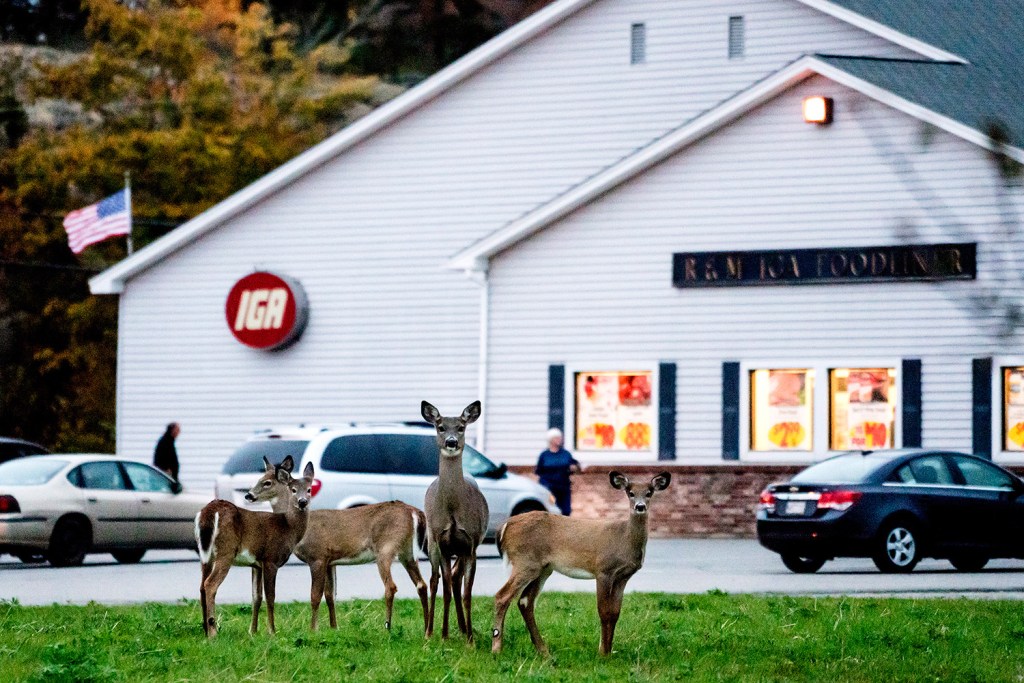
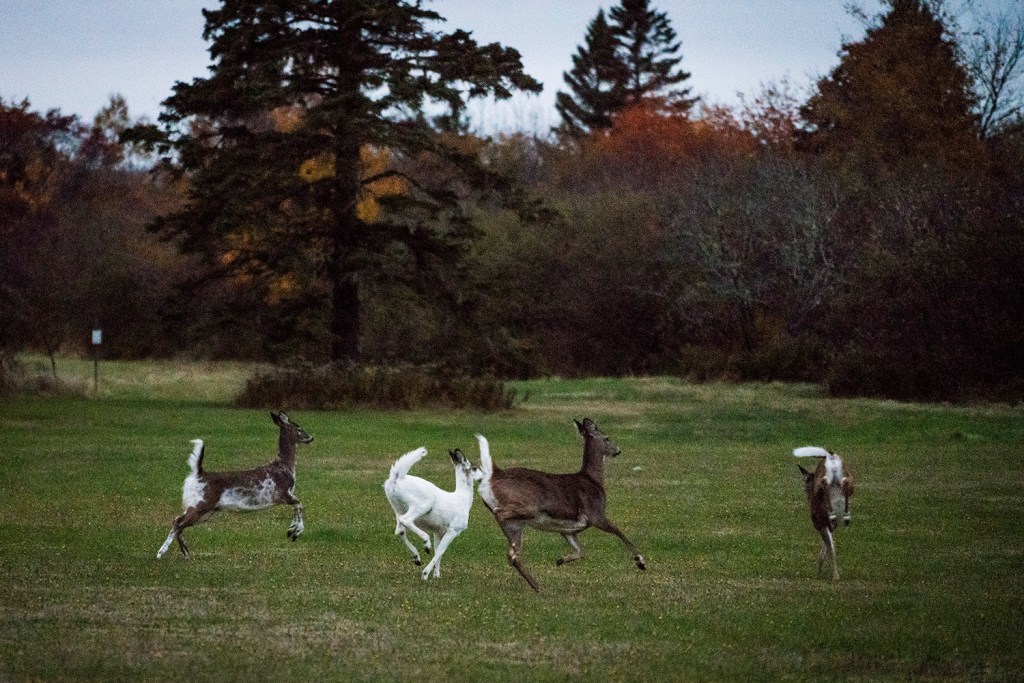



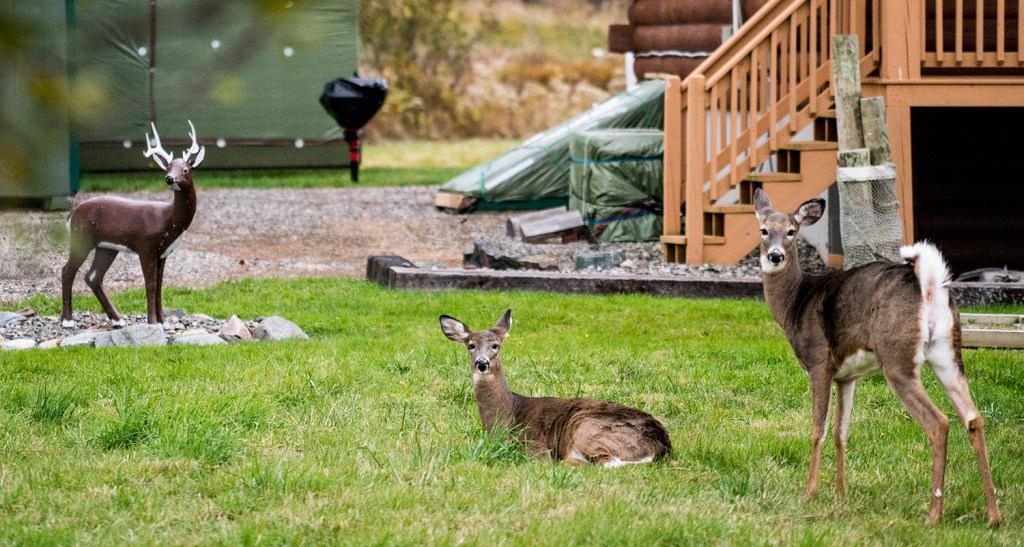
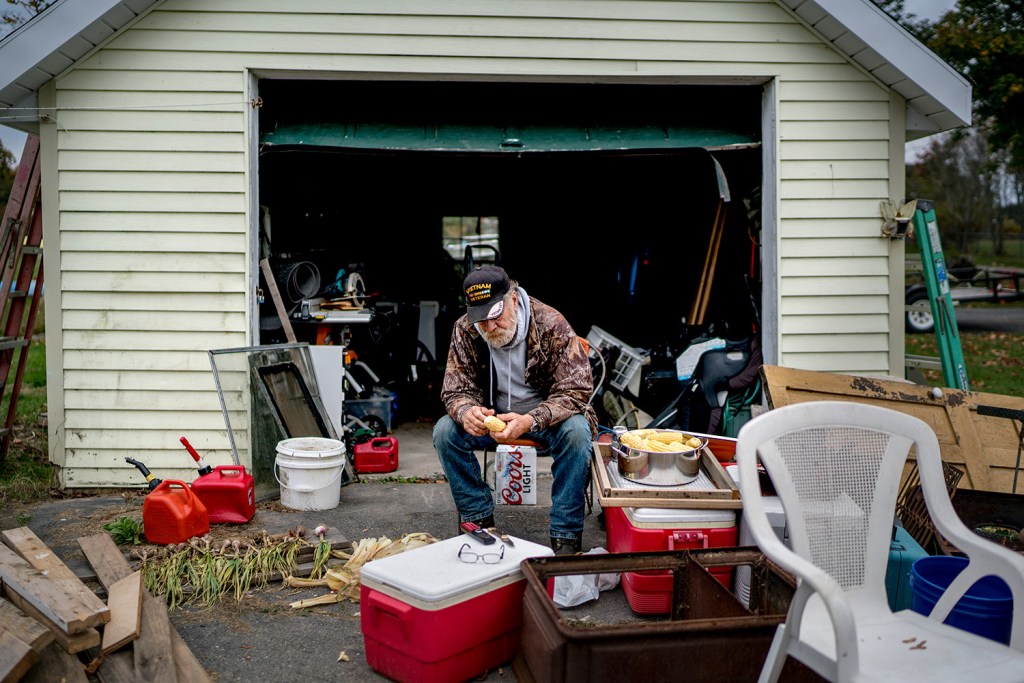
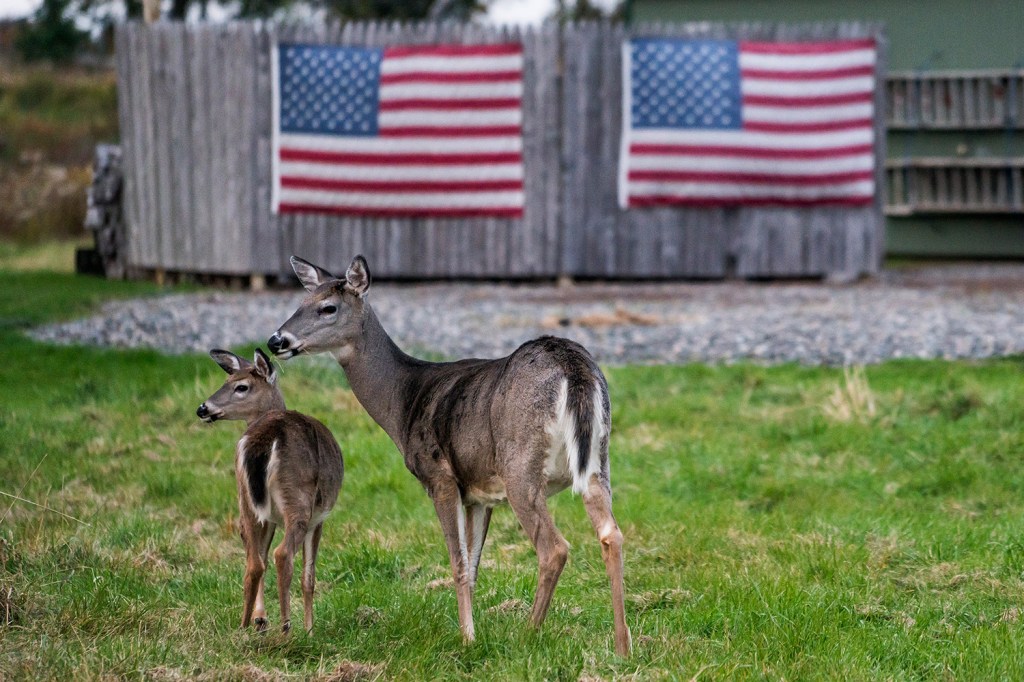
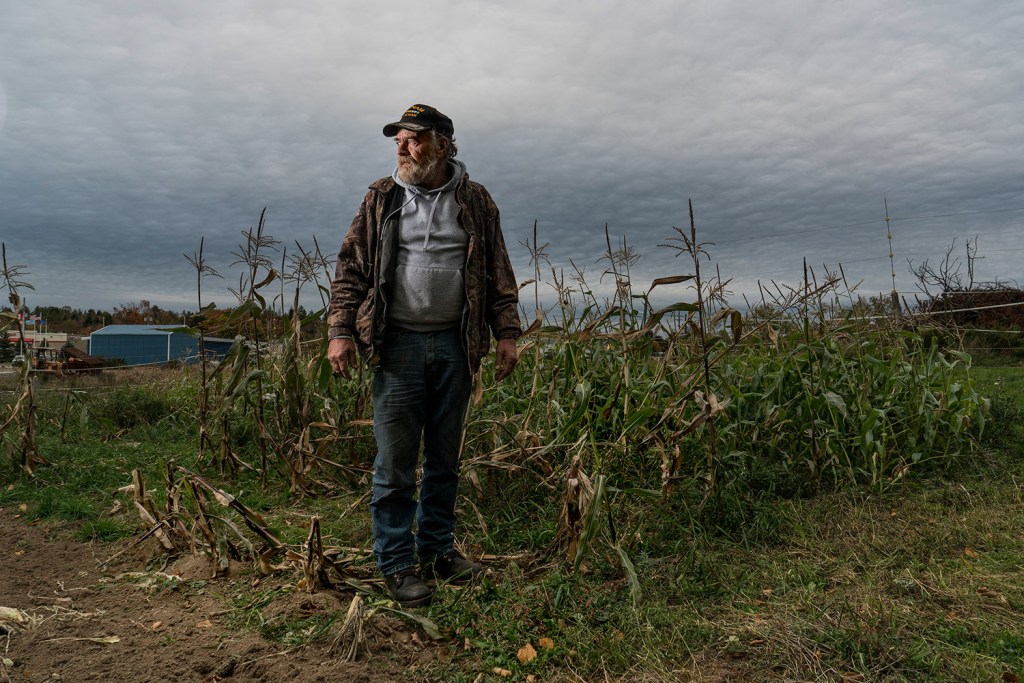
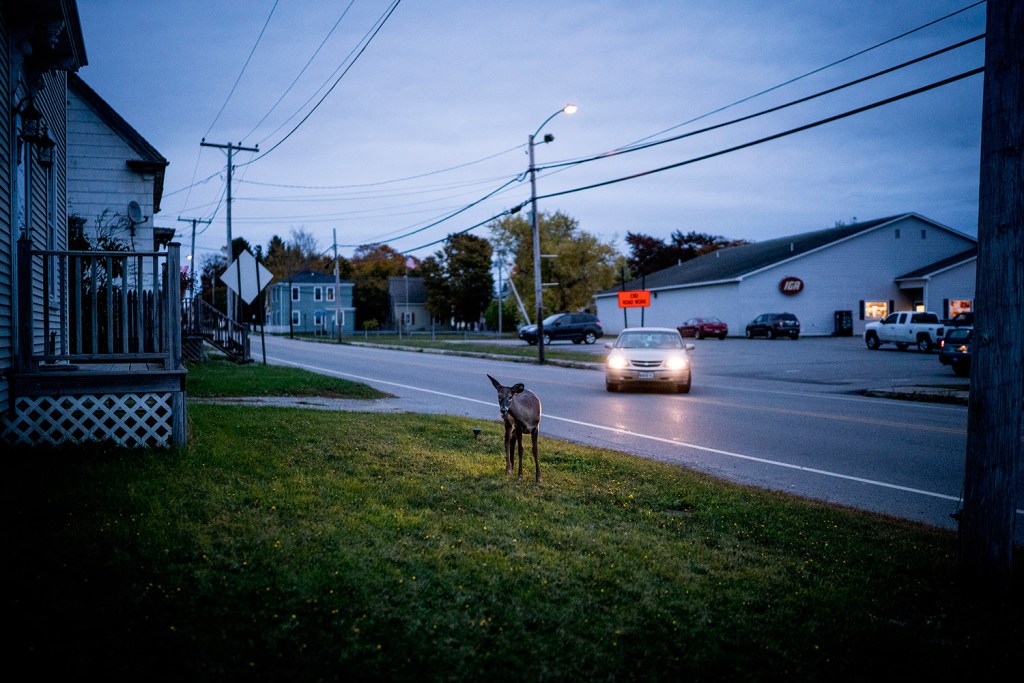

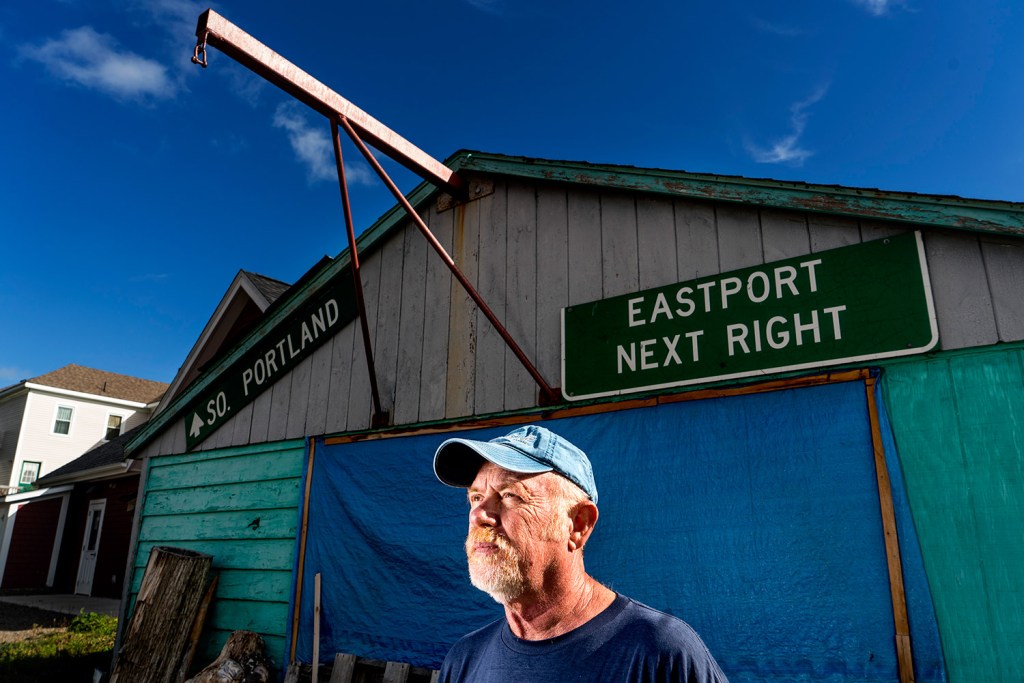
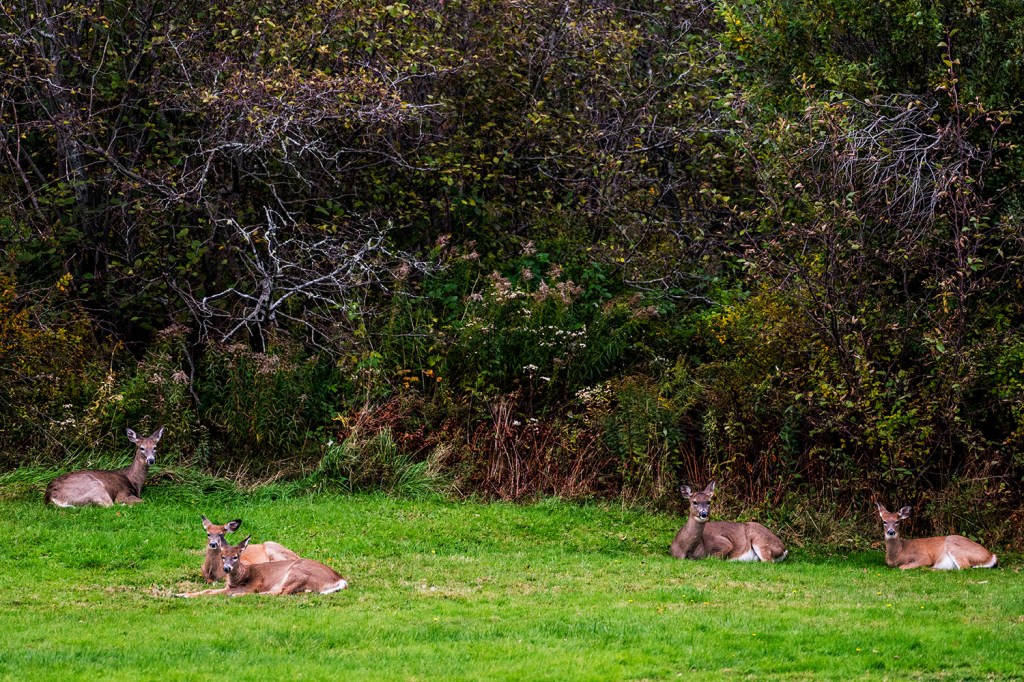
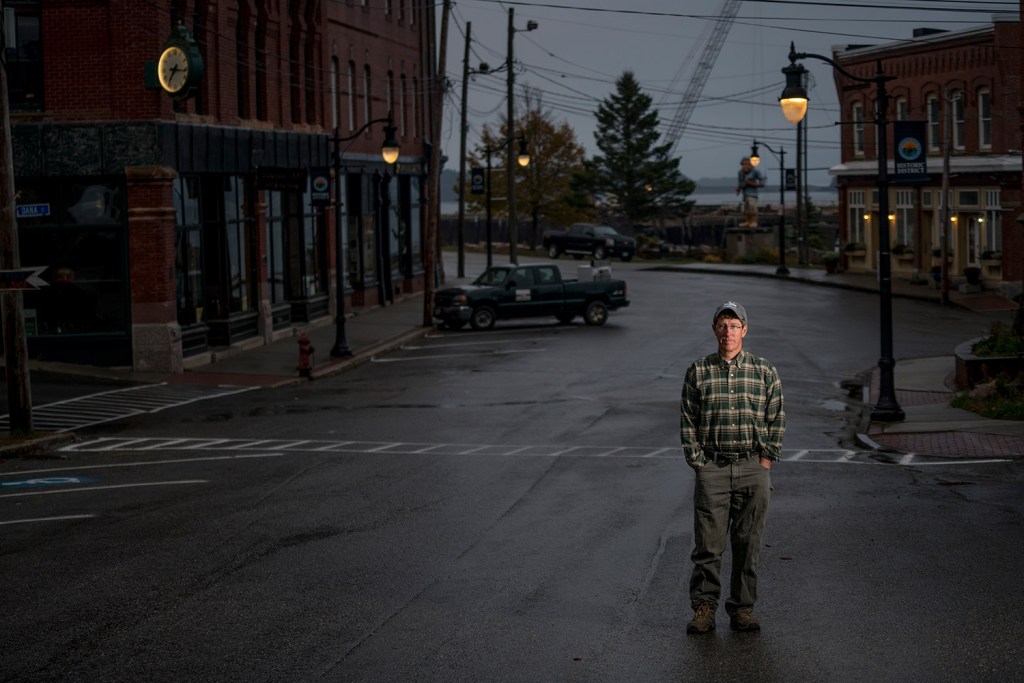

Comments are no longer available on this story